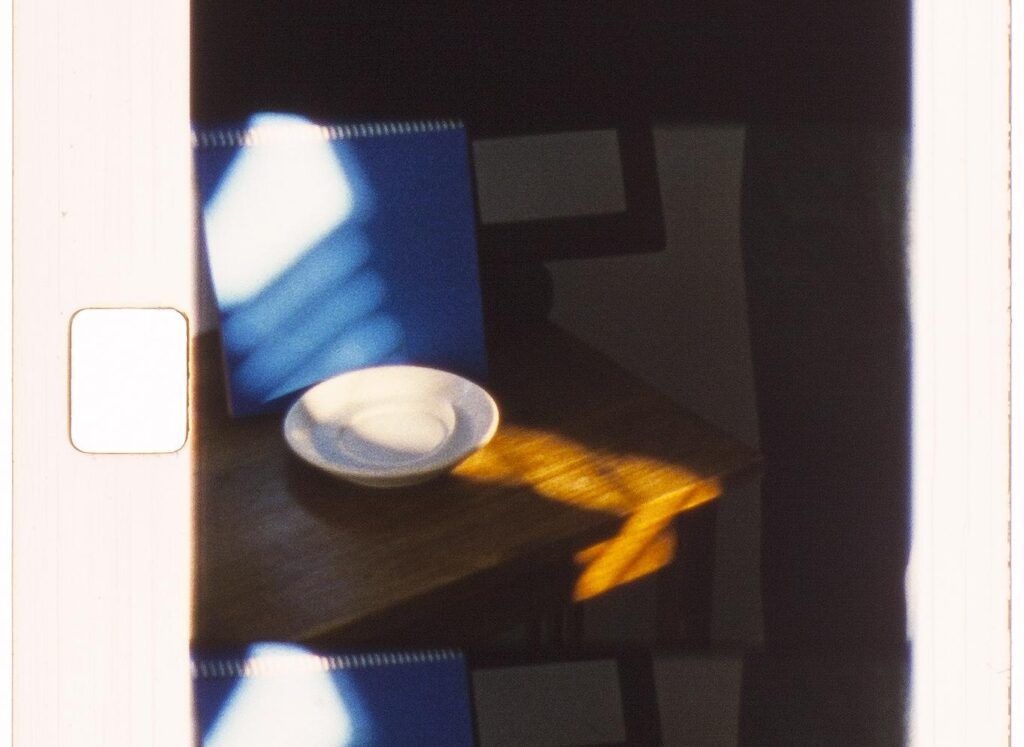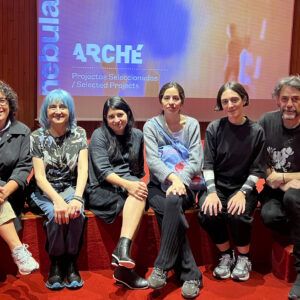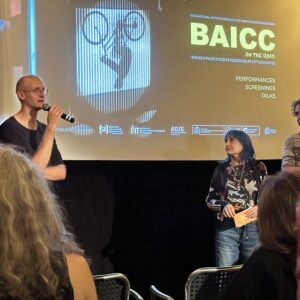Down below, you’ll find a series of thoughts by artist and researcher Esperanza Collado –a selection of excerpts from a longer text on Una película en color and Un baile con Fred Abstrait, two films by Bruno Delgado Ramo, whose work will be featured this year in the form of a screening, a performance (made in collaboration with Las Synergys), and an installation. Here, Collado delves into the role of rooms in Delgado’s films.
Una película en color and Un baile con Fred Abstrait are conceived as a research project where Delgado investigates narratively and cinematographically the conditions of the modern work placement, that is, the studio, the cabinet or the room of the “maker”. While some formal approaches to this topic are guided by Maistre’s book, the iconographies of Saint Jerome in his Study are also a recurrent source of conceptual and formal reference. Initially, the film intended to revisit the forty-two chapters of Maistre’s work through the camera-room device in a rather rigid structural approach, but towards the end of his creative process he breaks up with the structure given by the book and continues more intuitively.
*
Delgado is in fact not interested in the literary dimension of the book, but rather in the potentialities of working with the idea of spatial confinement as experience of a territory where to explore the possible relationships between, on the one hand, body and (working) space, and between light, camera and room, on the other. Una película en color and Un baile con Fred Abstrait cross-over readings and perspectives between such a distinction too, well as explorations into notions of distance, measure, scale, etc., that can connect the utilization of film and the film camera and a room in all their spatial and temporal dimensions. In addition, these issues are often treated with a dose of humour that reminds of Buster Keaton and a great deal of wit in both interrelated films.
As it has been previously mentioned, the films explore the relationship between the room and the camera as enclosed spaces where light-based events take place. In Maistre’s book, the experience of being alone naturally leads to an obsession with reflection and «with the sense of doubling that is forced on anyone who can think but not act, or is obliged, for company, to talk to himself.» (Brown, 2013) These ideas of reflections, imprisonment and doubling (in this case in the form of shadows) call to mind another reference worth mentioning: Plato’s Allegory of the Cave and its lesson on the nature of perception.Indeed, Delgado’s films are an attempt to signify an interior space. Furthermore, the dimensions of the room may vary in accordance with the subjective moods of Maistre and, of course, Delgado’s: «sometimes the four walls are a little claustrophobic, but more often the room suddenly turns out to be vast in its dimensions, as if the distance from his armchair to his desk suddenly constituted a huge and almost uncrossable terrain» (Brown, 2013). Reflections abound in the two films, both in the form of light phenomena entering the room by the window, tracing lines and patterns on the book and fruits, and in the views, often partial, of Bruno’s head —most of the times seen from behind or from the sides— and hands in an attitude of thinking, writing or reading. In Maistre’s book, the experience of being alone also leads naturally to writing, an activity related to inwardness and retreat that has —like cinema— the capacity to connect two distant spatio-temporal points: the here and now of the physical reality of the writer/reader/spectator and the distant images or locations the film or the piece of writing take us to.
*
Una película en color and Un baile con Fred Abstrait are entirely shot in a room, this is Delgado’s room in his parents (both architects) home in Seville. The room is composed of a door, a window, a desk, a chair, an armchair, a bed, a mirror, some lithographed portraits, stove, carpet, lamp, bookshelf, books, lectern, writing material, folio paper and clothing. All the iconography related to Saint Jerome that appears on the films refers to the historical foundation of the modern thinker or creator at large as someone who works in his room. The room of Baruch Spinoza in Rijnsburg, for instance, was an interior room, very small, where he kept a wheel to polish glasses. He used the same room to read and write. In the representations of Saint Jerome chosen by Delgado there’s a depiction of the monk as someone dedicated to reflect and think. His rooms are pleasant, they have windows, desks, reading lamps, and Saint Jerome is normally presented reading or writing surrounded by his belongings and objects, as for instance, magnifying lenses, pens, paper, etc.
Delgado presents in his films the artifice of transforming one’s own room into a film set, where shooting the light that crosses the walls and a focus on fruits becomes a still-life. This idea derived in part from the vision, through his window, of his neighbour’s kitchen. Delgado then builds an environment capable of recreating a still-life. In fact, the level of artificiality created in the room leads to this construction. All that is conceived inside refers to the exterior world. The colour of the fruits becomes a play where the linguistic potentiality (do you think of the colour when you name the fruit?) leads to the seduction of working with words. «There’s discoveries but it’s all a mise-en-scène» admits Delgado in a conversation.






